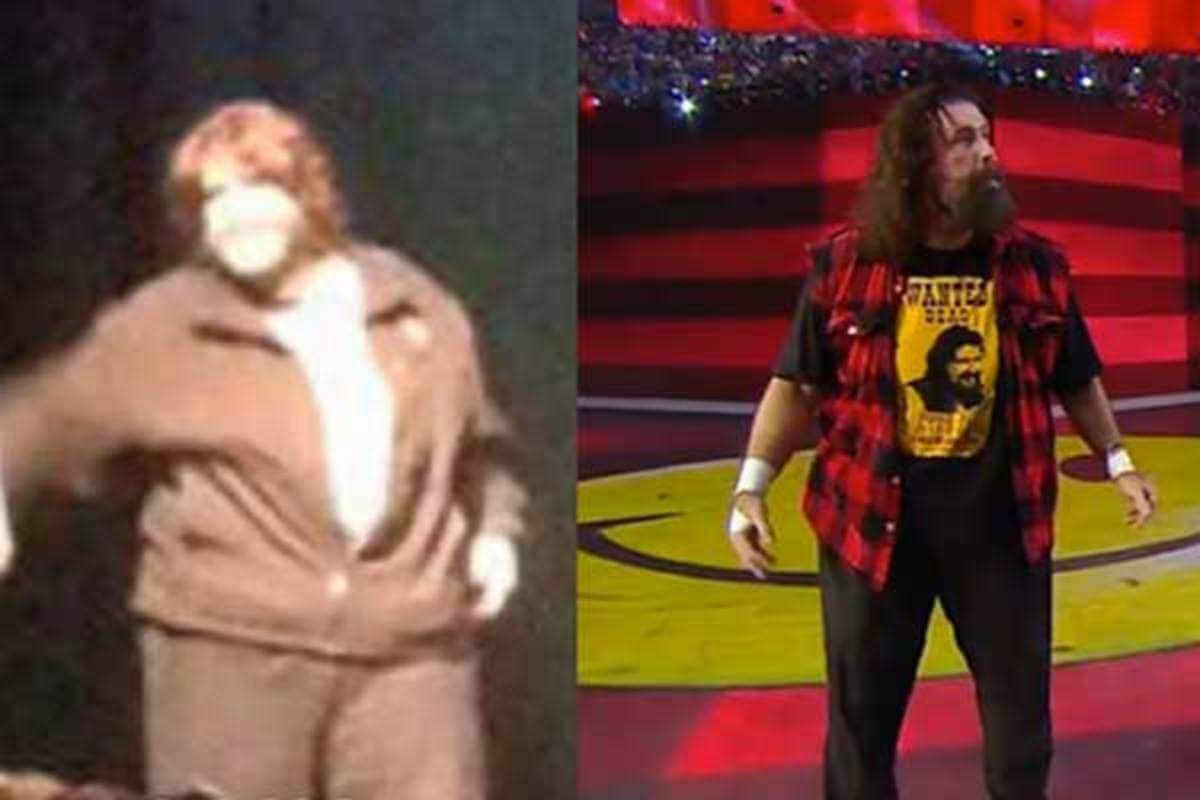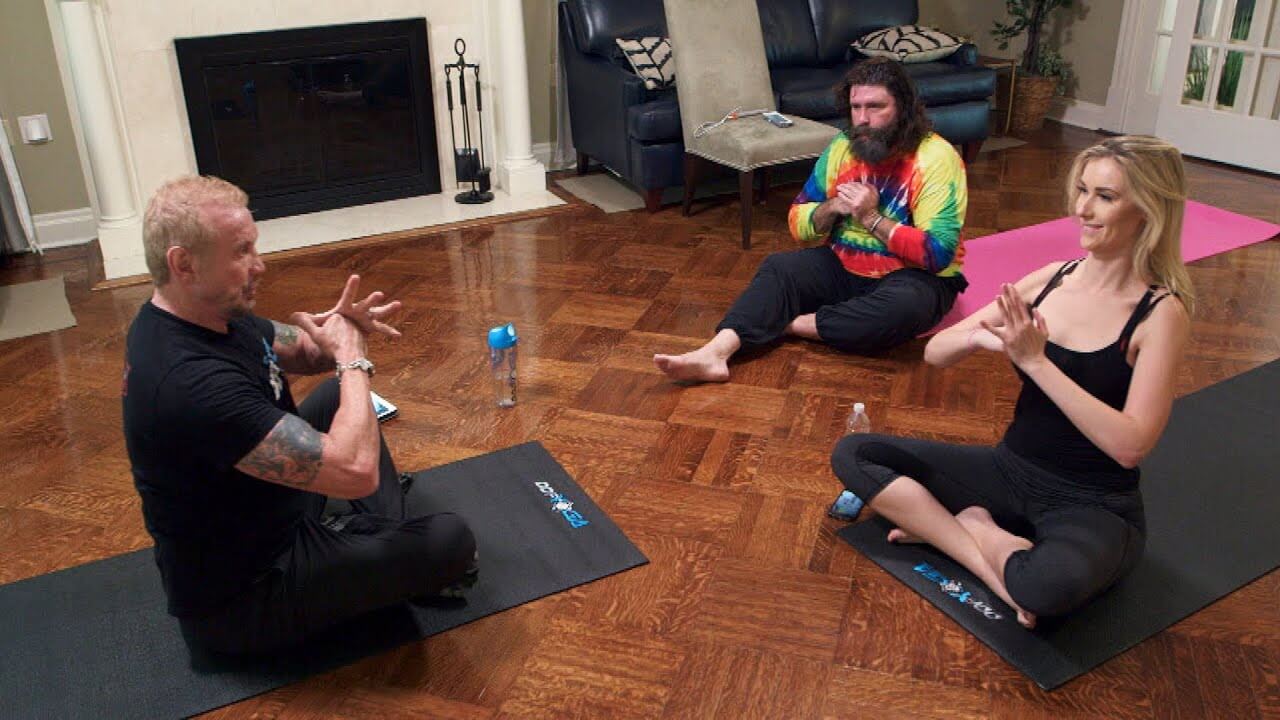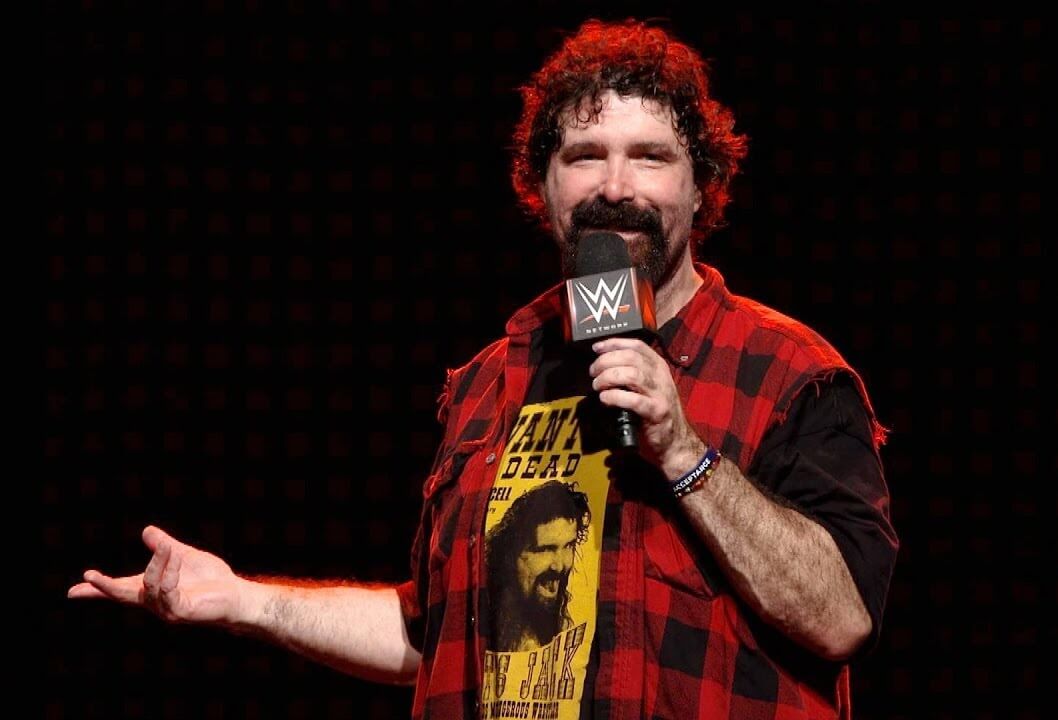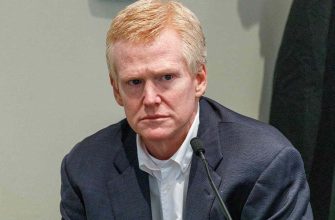Mick Foley is a highly popular and successful professional wrestler who wrestled for WWE and other promotions under various personas like Mankind, Cactus Jack, and Dude Love (Wikipedia). Despite not having the typical muscular physique of most wrestlers, Foley succeeded through his fearless wrestling style, charismatic personalities, and ability to connect with fans.
However, his weight fluctuated dramatically over the years, ballooning up to 300+ pounds at times due to unhealthy eating habits and limited exercise. Foley recognized the need to get in better shape and make lifestyle changes for the sake of his career and long-term health.
Mick’s Motivation to Lose Weight

Mick Foley had multiple motivations for losing a significant amount of weight. First and foremost, Foley was dealing with a number of health concerns related to being overweight, including type 2 diabetes and high blood pressure. Foley received some hard truths from his doctor about the dire effects his weight was having on his health, which inspired him to make major lifestyle changes.
In addition to health worries, Foley wanted to improve his physical conditioning and be in better shape for wrestling. Even though he was semi-retired, he still made occasional wrestling appearances and wanted to perform at his best. Foley was inspired by other wrestlers who had undergone dramatic body transformations, proving that substantial weight loss was possible through diet and exercise. This gave him confidence that he could also achieve major weight loss goals.
Diet Changes
Mick Foley dramatically changed his diet in order to lose a significant amount of weight. He gave up drinking soda and cut out junk food and sweets. Instead, Foley focused on eating lean protein sources like chicken and fish along with vegetables and some complex carbohydrates like brown rice and quinoa.
Eating smaller portion sizes was also key. The diet overhaul helped him drop significant weight by cutting empty calories and focusing on healthier, nutrient-dense foods.
Exercise Routine

Mick Foley adopted a rigorous exercise routine at the peak of his wrestling career to get in shape and maintain his performance in the ring. This included a combination of weight training, cardio, and flexibility exercises.
For weight training, Mick focused on basic compound lifts like squats, deadlifts, and bench presses to build overall strength and power. He trained with relatively heavy weights and low reps to increase his muscular endurance. This gave him the ability to perform and withstand the demanding physicality of pro wrestling matches night after night.
In terms of cardio, Mick did a lot of running, biking, and swimming to improve his cardiovascular health and stamina. Long distance running helped increase his aerobic capacity and VO2 max. He often went on 5-10 mile runs as well as used the stationary bike and pool for low-impact cardio training. This enhanced his breathing and allowed him to wrestle for extended periods of time.
Finally, Mick incorporated yoga, stretching, and flexibility exercises into his routine. This increased his range of motion and prevented injuries from the constant falls and impacts involved in pro wrestling. Activities like yoga, Pilates, and dynamic stretching made his body more nimble and resilient in the ring.
Overall, Mick Foley’s exercise routine balanced strength training, cardio, and flexibility work to transform his body and make him one of the top performers in wrestling history. His dedication to training off the mat was instrumental to sustaining his career.
Lifestyle Adjustments
Mick made several adjustments to his daily lifestyle and habits to support his weight loss journey (Foley). He focused on getting better quality sleep, knowing that lack of sleep can disrupt hormone levels and metabolism. Mick also worked on reducing stress through meditation, as high stress levels can lead to overeating and weight gain.
Finally, Mick paid special attention to eating healthy while traveling for wrestling events. He brought healthy snacks like fruit, vegetables, nuts and protein bars with him on the road. This helped Mick avoid relying on fast food and junk food when traveling, which was key for staying on track with his diet. Planning ahead with healthy travel snacks enabled Mick to stick to his weight loss goals even with an irregular travel schedule.
Weight Loss Timeline

Mick Foley’s weight loss journey took place gradually over several years. In December 2013, he weighed 338 pounds and set a goal to get down to 250 pounds by December 2016. This goal represented losing almost 100 pounds over 3 years.
Foley took a slow and steady approach to reaching his goal weight. He made incremental diet and exercise changes over time, leading to a gradual drop in pounds. There were inevitable ups and downs along the way, which is common for any major lifestyle change. Despite some obstacles, Mick stuck with his weight loss program and saw consistent progress over months and years.
By December 2016, Foley had successfully reached his target weight of 250 pounds – hitting this goal with 3 months to spare! He announced this achievement on Facebook, noting that this was the lightest he’d been since 1990. Through determination and persistence over a multi-year timeline, Mick accomplished his ambitious weight loss aims.
Impact on Wrestling Career
Mick Foley’s dramatic weight loss had a significant impact on his wrestling career. With over 100 pounds shed, Mick had much more energy and stamina in the ring. He was able to wrestle more high-flying, fast-paced styles that his previous size did not permit.
The weight loss also extended Mick’s active wrestling career, as the reduced strain on his knees and back allowed him to continue performing at a high level for several more years. The increased conditioning and new repertoire made Mick a more versatile and durable wrestler in the ring.
Advice for Others

Mick Foley recommends making small, sustainable changes to diet and exercise rather than extreme or rapid weight loss. Crash dieting or intense training regimens are difficult to maintain long-term. Instead, he suggests gradually modifying eating habits by reducing portion sizes, choosing healthier options, and cutting back on junk food and soda.
Foley also emphasizes the importance of accountability partners and support systems. Having people to exercise with, share healthy recipes, and provide encouragement along the way makes weight loss easier. Joining a program like Weight Watchers that provides community and tracking tools can be very beneficial.
Finally, Mick stresses being patient and consistent. Significant weight loss takes time and dedication. There will be ups and downs along the way, but sticking with small changes leads to big results over months and years. By adopting a patient, resilient mindset and making fitness a regular habit, people can transform their health like Mick Foley.
Life After Weight Loss
After losing a significant amount of weight, Mick Foley had to work hard to maintain his new healthy habits and lighter frame. He continued to stick to a nutritious diet and exercise regularly, which helped him keep the weight off. Foley found that maintaining his weight loss was almost as challenging as losing the weight in the first place.
Foley took pride in his accomplishment and wanted to inspire his fans and others who were trying to lose weight. He served as a motivational figure, proving that significant weight loss is possible through diet, exercise, and lifestyle changes. Foley showed that you can transform your body at any age if you commit to making healthier choices.
By opening up about his weight loss journey, Mick Foley demonstrated the rewards of hard work and perseverance. His story empowered others to take control of their health and fitness as well. Foley felt a great sense of fulfillment in maintaining his weight loss and being able to positively impact others along the way.
Conclusion
Mick Foley’s weight loss journey provides inspirational takeaways for anyone looking to transform their health. By committing to a long-term lifestyle change centered around diet, exercise, and mental adjustments, Mick lost over 70 pounds and improved his quality of life.
While the specifics of Mick’s diet and workout routine worked for him, the more universal lessons are that lasting change requires patience, discipline, and an openness to modifying habits and behaviors. Small changes add up over time. Mick didn’t lose 70 pounds overnight, but through incremental progress by setting short-term goals.
The mental aspect is just as critical as the physical. Mick had to overcome negative self-talk, build his confidence and self-image, and cultivate a mindset focused on the positives of becoming healthier versus dwelling on what he had to give up. He embraced weight loss not as a sacrifice, but an exciting new chapter.
Mick’s story demonstrates that it’s never too late to take control of your health. With commitment to fitness and wellbeing as an ongoing lifestyle, anyone can achieve transformative results. Mick’s weight loss journey wasn’t about a temporary diet, but forging a new identity built on healthy, sustainable habits. That motivational mentality can empower us all.








